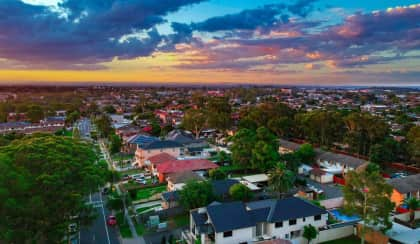Nearly 90% of Aussie markets have seen prices leap
The national median home price has jumped a whopping 8.9 per cent since last February to hit an all-time high.

CoreLogic’s Home Value Index has seen an extra $63,000 added to the national median dwelling value, taking the current median to $765,762.
In total, 88.4 per cent of the over 4,000 housing markets studied experienced price rises between February 2023 and February 2024. This is a substantial leap from just 39.1 per cent of markets that recorded positive annual growth one year ago in February 2023.
According to CoreLogic economist Kaytlin Ezzy, “the broad-based capital gains seen over the past year reflect the ongoing imbalance between housing supply and demand, which has helped to counteract the less favourable market and affordability conditions”.
Despite very high interest rates, worsening housing affordability and a significant cost-of-living crisis, Ezzy stated that “entrenched undersupply in housing stock” and “above-average demand, thanks to strong net migration” have kept dwelling values climbing.
The strongest levels of growth were seen in the states of Queensland, South Australia and Western Australia.
In Brisbane, 100 per cent of suburbs saw a house price rise – the only city in Australia to see this level of uniform growth. Growth in regional Queensland was also extremely strong: 98.8 per cent of markets saw a rise in house and unit values, with only five suburbs not seeing a price increase.
Meanwhile, Perth and Adelaide were neck and neck with home value rises. Both cities saw prices increase in over 99 per cent of suburbs, with Perth seeing just one suburb in decline, and Adelaide seeing two. In all these suburbs, declines were less than 1 per cent.
“Positive net migration flows, low housing supply and comparatively low housing prices have all helped support widespread growth across these markets,” Ezzy explained.
Hobart was on the other end of the spectrum. Over half (56.1 per cent) of markets in the city witnessed a yearly decline in house and unit numbers, while three-quarters saw price decreases over the three months to February 2024.
“The weakness in the Hobart market over the past two years contrasts with the positive growth seen from 2017 to 2022,” stated Ezzy.
“Relatively loose supply levels and negative interstate migration, combined with the city’s relatively unaffordable price point compared to local incomes, have all likely contributed to falling values over the past two years.”
Sydney saw 98.6 per cent of suburbs experience an annual rise, while 90.3 per cent of Melbourne suburbs witnessed a price increase.
“While still relatively broad-based, the pace of growth seen across the country’s individual house and unit markets is increasingly diverse – a trend that seems set to continue in 2024,” stated Ezzy.

